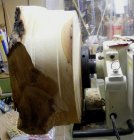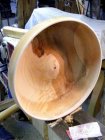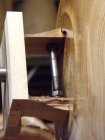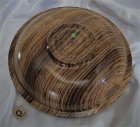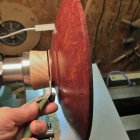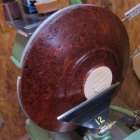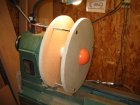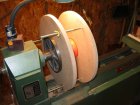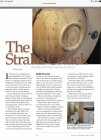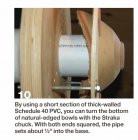Odie
Panning for Montana gold, with Betsy, the mule!
Just finished a 15 3/4" bowl and can't go much larger. The swing on my Woodfast lathe is 16", but I think I can go about 16 1/4" before it rubs the bedways. Just wondering how close to the bedways other turners will go, and feel comfortable about it......
Also, how slow can the rpm be, and still have a good parting cut on a pine waste block?
-----odie-----
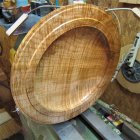
-----odie-----
Also, how slow can the rpm be, and still have a good parting cut on a pine waste block?
-----odie-----

-----odie-----

